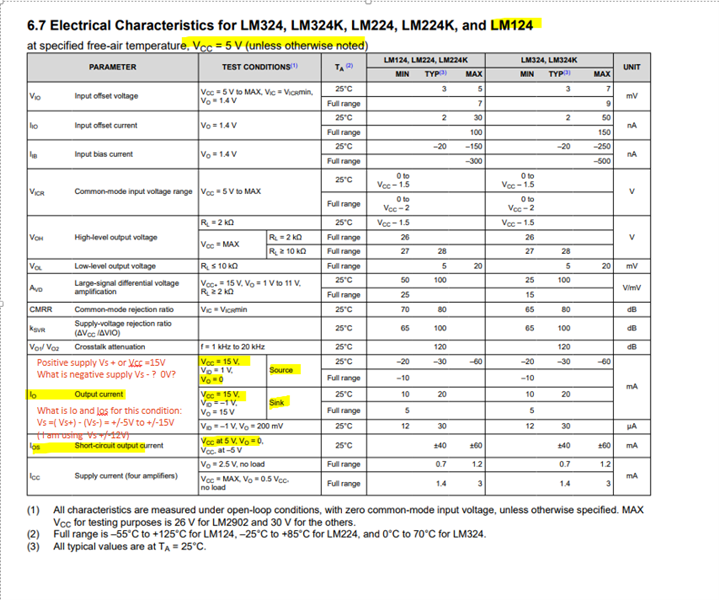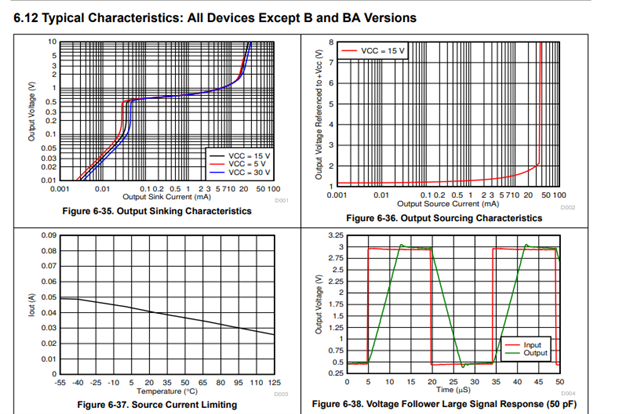Other Parts Discussed in Thread: LM324B
Hi Team,
We would like to ask your help regarding our customer's inquiry below.
I am looking for additional data on the LM124DG4. I got the datasheet, however it doesn't have the parameters that I am looking for. I am looking for the electrical characteristics for LM124 with Vs =(V+/V-)=5 to 36V, datasheet only have the section for LM124 with Vs=5V. Would like to know the output current( source/sink) and short circuit current for the LM124 with Vs=24V (+/-12V).
Regards,
Danilo






